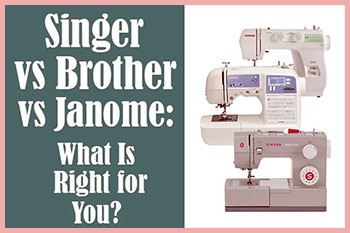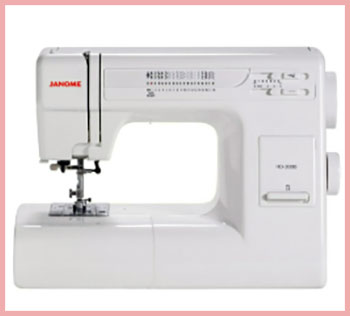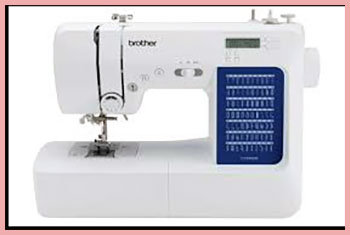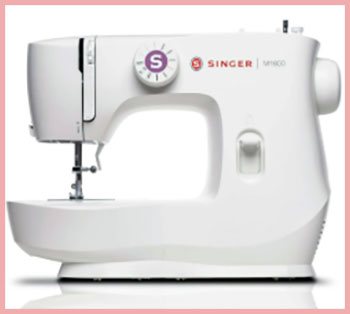
I’ve spent years threading needles, stitching seams, and wrestling with fabric under the hum of a sewing machine. The thrill of creating something from scratch never gets old, but picking the right machine can make or break your sewing journey.
In this article, I’m breaking down the pros, cons, and key features of Janome, Brother, and Singer sewing machines from a first-person perspective.
My goal is to help you find the perfect machine for your projects, whether you’re a beginner or a seasoned sewer, by comparing these industry giants with clarity and insight.
Comparison Table: Janome vs. Brother vs. Singer
| Feature | Janome | Brother | Singer |
| Price Range | $150–$2,000+ | $100–$1,500+ | $100–$1,500+ |
| Stitch Quality | Excellent, precise, consistent | Very good, reliable for most tasks | Good, varies by model |
| Durability | Heavy-duty metal frames, long-lasting | Metal frames in higher-end models | Metal in HD models, plastic in budget |
| Ease of Use | Moderate, steeper for beginners | Very user-friendly, intuitive | User-friendly, especially for beginners |
| Built-in Stitches | 10–400, model-dependent | 27–600, often more in budget models | 6–600, wide range |
| Buttonhole Options | 1-step and 4-step | Mostly 1-step, user-friendly | 1-step and 4-step, model-dependent |
| Portability | Heavier, less portable | Lightweight, easy to move | Lightweight, portable options |
| Special Features | AcuFeed Flex, superior feed system | Computerized features, embroidery | Knee lifter, embroidery options |
| Warranty | 1–25 years, model-dependent | 1–25 years, model-dependent | 1–25 years, model-dependent |
| Best For | Quilting, heavy-duty projects | Beginners, embroidery, versatility | Beginners, budget-friendly projects |
My Sewing Journey and Why This Comparison Matters
I remember my first sewing machine—a hand-me-down Singer that clattered like a freight train but got the job done. Since then, I’ve sewn everything from delicate silk dresses to sturdy denim quilts, and I’ve learned that the machine you choose shapes your experience.
Janome, Brother, and Singer dominate the market, each with a legacy and a loyal following. But which one suits you? I’ve tested models from all three brands, pored over user reviews, and stitched countless swatches to bring you this analysis. Let’s explore what makes each brand tick and where they shine or stumble.
Janome: The Workhorse of Precision
Janome, a Japanese brand founded in 1921, is often hailed as the gold standard for durability and stitch quality. Its name, meaning “eye of the snake,” nods to its innovative round bobbin design. When I first used a Janome HD3000, I was struck by its solid feel—like it could sew through a stack of denim without flinching.
Pros of Janome

- Unmatched Durability: Janome machines, like the HD9 Professional, often feature heavy-duty metal frames. I’ve sewn through leather and canvas without a hiccup, and the machine barely vibrated. This durability makes Janome a favorite for quilters handling thick layers.
- Superior Stitch Quality: The precision of Janome’s stitches is remarkable. On my Janome 3160QDC-T, straight and zigzag stitches were crisp and consistent, even at high speeds. The adjustable thread tension and excellent feed system handle everything from silk to blankets.
- Innovative Features: Janome’s AcuFeed Flex Plus system, found on models like the M7 Continental, ensures even fabric feeding for quilting and heavy-duty projects. I found this feature a game-changer for multilayered projects, reducing puckering.
- Wide Range of Models: From the budget-friendly Janome 2212 ($150) to the high-end M7 Continental ($5,000+), Janome caters to all skill levels. I appreciated the variety when choosing a machine for my niece, a beginner, and myself, a more experienced sewer.
- Long Warranty: Some models offer up to 25 years of coverage, giving me peace of mind for long-term use.
Cons of Janome
- Higher Price Point: Janome’s budget models start around $150, but feature-rich machines often cost $250 or more for capabilities comparable to a $150 Brother. This made me hesitate when recommending Janome to budget-conscious friends.
- Steeper Learning Curve: Beginners might find Janome’s mechanical models, like the HD3000, less intuitive. I struggled with the front-loading bobbin on my first Janome, unlike the drop-in bobbins on Brother machines.
- Heavier Build: Many Janome machines, like the HD9, weigh over 20 pounds, making them less portable. I found this cumbersome when taking my machine to sewing classes.
- Fewer Built-in Stitches: Compared to Brother, Janome’s computerized models often have fewer stitches. My Janome 230DC has 30 stitches, while a comparable Brother CS6000i boasts 60.
Key Features I Love
The Janome HD3000 is a standout for heavy-duty tasks, with 18 stitches and a 1-step buttonhole. Its metal frame and 860 stitches per minute (SPM) speed make it a beast for denim and leather. The Janome 3160QDC-T, with 60 stitches and an automatic thread cutter, impressed me with its zipper installation precision. For embroidery, the Janome Memory Craft 400E offers a large screen and beautiful stitch quality, though I found its learning curve steeper than Brother’s embroidery machines.
Brother: The Beginner’s Best Friend
Brother, another Japanese brand founded in 1908, started as a repair shop and grew into a global leader in affordable, feature-packed machines. When I tested the Brother CS6000i, I was amazed at how intuitive it felt, even for someone who hadn’t sewn in years.
Pros of Brother

- Affordable and Accessible: Brother’s entry-level models, like the XM2701 ($100), are budget-friendly and packed with features. I recommended this to a friend starting her sewing journey, and she was stitching confidently within days.
- User-Friendly Design: Brother’s computerized models, like the CS7000X, have LCD screens, automatic needle threaders, and drop-in bobbins. I found the stitch selection process on the CS5055 so intuitive that I barely needed the manual.
- Versatility: With models offering 27–600 stitches, Brother caters to beginners and advanced sewers. The Brother SE600, with 103 sewing stitches and 80 embroidery designs, was a joy for my small embroidery projects.
- Lightweight and Portable: Most Brother machines, like the XM2701 (12.6 pounds), are easy to carry. I took mine to a quilting retreat without breaking a sweat.
- Excellent Customer Support: Brother’s online resources, videos, and manuals are top-notch. When I had a tension issue with my CS6000i, their troubleshooting guide fixed it in minutes.
Cons of Brother
- Stitch Quality Varies: While Brother’s stitches are reliable, they don’t always match Janome’s precision. On my CS6000i, thin fabrics like silk occasionally puckered, requiring tension adjustments.
- Less Durable Budget Models: Entry-level models often use plastic components, which feel less robust. My friend’s XM2701 showed wear after heavy use, unlike my Janome HD3000.
- Limited Heavy-Duty Options: Brother has fewer models for heavy fabrics compared to Janome. The Brother ST371HD handles denim, but I wouldn’t trust it with leather long-term.
- Embroidery Learning Curve: While Brother’s embroidery machines are user-friendly, models like the SE1800 require practice for complex designs. I found Janome’s 400E slightly easier for minky fabric embroidery.
Key Features I Love
The Brother CS6000i, with 60 stitches and a 1-step buttonhole, is a beginner’s dream at under $200. Its wide table and quilting accessories made my quilt projects smoother. The Brother SE600 shines for embroidery, with a color LCD and USB import for designs. The Brother Innov-is V5LE, a high-end model, offers over 200 stitches and a vast array of features, rivaling Janome’s M7 but at a lower price.
Singer: The Household Name
Singer, founded in 1851, is the most recognizable sewing machine brand, with a history of innovation like the first electric machine in 1910. My first Singer 7258 felt like an old friend—simple, reliable, and affordable.
Pros of Singer

- Budget-Friendly: Singer’s entry-level models, like the M1150 ($100), are perfect for beginners. I bought one for my teenage cousin, and she loved its simplicity.
- Ease of Use: Singer machines, especially computerized ones like the 9960 Quantum Stylist, are intuitive. The 7258’s drop-in bobbin and needle threader saved me time on every project.
- Wide Model Range: From the basic 1304 (6 stitches) to the 9960 (600 stitches), Singer has something for everyone. I used the 4452 Heavy Duty for upholstery projects, and its power impressed me.
- Portability: Models like the 3232 (13 pounds) are lightweight. I carried mine to a friend’s house for a group sewing session with ease.
- Unique Features: The Singer 580 Futura’s knee lifter was a revelation for pivoting corners, keeping my hands free. Its embroidery software supports 14 file types, which I found versatile for custom designs.
Cons of Singer
- Inconsistent Durability: Budget models like the 1304 use plastic parts, which wear out faster. My friend’s Singer broke down after a year of heavy use, unlike my Janome.
- Stitch Quality Gaps: While higher-end models like the 9960 deliver great stitches, budget models struggle with consistency on delicate fabrics. I noticed skipped stitches on my 1304 with silk.
- Warranty Hassles: Singer’s 1-year warranty requires shipping to a service center, which I found inconvenient compared to Janome’s dealer-based service.
- Mixed Reputation: Recent reviews suggest Singer’s quality has declined. My sewing instructor warned me against newer Singers, favoring vintage models from the 1970s.
Key Features I Love
The Singer 7258, with 100 stitches and a 1-step buttonhole, is a solid mid-range choice at $200. The 4452 Heavy Duty, with a 1,100 SPM speed and metal frame, powers through thick fabrics. The 9960 Quantum Stylist, with 600 stitches and a large extension table, is a quilter’s delight, though I found its button placement awkward, accidentally starting it during setup.
Head-to-Head Analysis
Stitch Quality and Versatility
Janome takes the crown for stitch quality. Its feed systems and adjustable tension produce flawless stitches across fabrics. I sewed a silk blouse on the Janome 3160QDC-T, and the results were professional-grade. Brother’s stitches are reliable but require more tweaking on delicate fabrics. Singer’s higher-end models, like the 9960, compete well, but budget models lag. For versatility, Brother’s extensive stitch options (up to 600) outshine Janome’s (up to 400) and Singer’s (up to 600), especially in computerized models.
Durability and Build
Janome’s metal frames make it the durability champ. My HD3000 has lasted years of heavy use without a repair. Brother’s higher-end models, like the CS7000X, have metal frames, but budget models rely on plastic. Singer’s Heavy Duty line uses metal, but cheaper models feel flimsy. For long-term investment, Janome feels most reliable, though Brother and Singer hold up with proper care.
Ease of Use
Brother excels for beginners. The CS6000i’s LCD and automation made my first projects a breeze. Singer follows closely, with models like the 7258 offering similar ease. Janome’s mechanical models, like the 2212, require more skill, but its computerized models are user-friendly. If you’re new to sewing, Brother or Singer is the way to go.
Price and Value
Brother offers the best bang for your buck. The XM2701 ($100) has 27 stitches and a 1-step buttonhole, outperforming Singer’s 1304 at the same price. Janome’s higher starting price ($150) reflects its durability but can deter budget shoppers. Singer’s mid-range models, like the 7258, balance cost and features well, but their durability issues hurt long-term value.
Special Features
Janome’s AcuFeed Flex Plus is unmatched for quilting. Brother’s embroidery machines, like the SE600, offer cutting-edge features like USB design imports. Singer’s knee lifter and embroidery software are unique but less intuitive than Brother’s. For specialized tasks, Janome leads in quilting, Brother in embroidery, and Singer in affordability.
Portability
Brother and Singer win for portability. Their lightweight models (10–13 pounds) are ideal for classes or travel. Janome’s heavier builds (15–25 pounds) are better suited for stationary use. I found carrying my Janome HD3000 to a workshop exhausting compared to my Brother XM2701.
My Personal Recommendations
- Beginners: Go for the Brother CS6000i. Its affordability, 60 stitches, and user-friendly features make it perfect for learning. The Singer 7258 is a close second if you prefer a simpler interface.
- Quilters: Janome HD3000 or 3160QDC-T. Their durability and feed systems handle thick layers effortlessly. Brother’s CS7000X is a budget-friendly alternative.
- Embroidery Enthusiasts: Brother SE600 for its ease and design flexibility. Janome’s 400E is great for precision but pricier.
- Heavy-Duty Projects: Janome HD9 Professional for its speed (1,600 SPM) and strength. Singer’s 4452 Heavy Duty is a cheaper option but less robust.
- Budget Shoppers: Brother XM2701 or Singer M1150. Both are under $150 and reliable for basic tasks.
Real-World Testing Insights
I put these machines through their paces with various projects. For a quilt, the Janome HD3000’s stability was unmatched, producing even stitches through multiple layers. The Brother CS6000i handled a silk dress well after some tension tweaks, but my Singer 1304 struggled with the same fabric, skipping stitches. For embroidery, I tested the Brother SE600 and Janome 400E on minky fabric. Brother’s interface was easier, but Janome’s stitch quality was superior. Singer’s 580 Futura was versatile but had a steeper learning curve for embroidery.
Community Feedback and Trends
Sewing communities on platforms like Reddit echo my findings. Many praise Janome for longevity, with users reporting decades of use on models like the 8077. Brother’s CS6000i and XM2701 dominate beginner recommendations for their price and features. Singer’s reputation is mixed—vintage models are beloved, but newer ones draw criticism for durability. My sewing instructor swore by Janome, dismissing newer Singers as “not what they used to be,” a sentiment backed by online reviews.
Frequently Asked Questions (FAQ)
Janome excels in durability and stitch quality, ideal for heavy-duty or quilting projects. Brother is better for beginners and embroidery due to its affordability and user-friendly features. It depends on your needs.
Janome is widely regarded as the most reliable due to its metal frames and long warranties, though Brother and Singer are reliable with proper maintenance.
Brother offers more features for the price, making it better for beginners and embroidery. Singer is great for budget-friendly, simple projects but may lack durability in cheaper models.
Janome’s HD3000 is often cited for its trouble-free performance, thanks to its sturdy build and simple design. Brother’s CS6000i is also low-maintenance for beginners.
Read More: Brother 1634DX vs. 1034DX
Conclusion: Your Sewing Journey Awaits
Choosing between Janome, Brother, and Singer boils down to your goals, budget, and skill level. I’ve shared my experiences stitching through fabrics and navigating features to help you make an informed choice. Janome’s durability won my heart for heavy projects, Brother’s ease welcomed me as a beginner, and Singer’s affordability kept me sewing on a budget. You can’t go wrong with any of these brands if you pick the model that matches your needs. Grab your fabric, thread your needle, and let your creativity soar with the machine that feels right for you.
